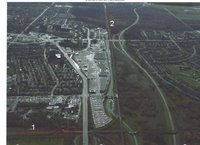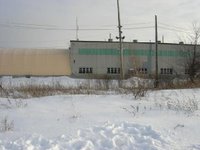 David G's
David G's simplification of the Walkley site vs 2 'virgin' greenspace sites: He wanted to know what relevance there was to doing a natural study on the three sites when one is so different than the other two. One would assume a site already used as a rail yard would have very little mitigation necessary to the natural environment since the function of the site won't change.
Bill Draper (MMM's ecologist) responded to this by saying that the area for his natural study of Walkley was chosen arbitrarily and was larger than necessary, encompassing a portion of the woods that would remain untouched by a maintenance facility. (
see photo of relative sizes of Lester and Walkley sites, which will be tabled at next meeting).
Ed (MMM): CP Rail's sale of Walkley site to the city does not include the tracks. Ed said that CP intended to 'salvage the rails'. Tim Lane asked if a price was worked out for the land with rails and Ed didn't know, seemed not to care or that it had no relevance.
Tim Chadder: Tim went over the zoning and land use of the 3 sites. Regarding the Lester site's city-owned section currently zoned as Institutional Government Zone (Ig): he said that a maintenance/storage facility would fall into Point 4 of section 7.7.1 'Permitted Main Uses'. Point 4 reads: "use that is owned and operated by the Federal, Provincial, Regional or Municipal Government or agency thereof, including the Airport Authority".
Peter countered that it could be easily challenged, noting the intention of this bylaw is to allow for similar uses in the spirit of Institutional Government. A train maintenance yard/storage facility is hardly similar to any of the other list items: agriculture, horticulture, passive recreational use, equestrian facilities, hog farm... Therefore the debate remains: can the city do what it wants with the land under this bylaw 'loophole'?
2 new designs were presented by MMM, one for the Bowesville site layout and one for a dramatic fly-over at the Walkley site to allow trains to go South when exiting the site.
Tim Lane began to comment on the new fly-over design for Walkley Yard before being interrupted. A separate meeting is planned between he and MMM on this issue. Tim's comments were regarding the site in relation to the stormwater project currently in construction. He contends that there simply is no room and therefore the plan is impossible to build, and not necessary anyways.
As an aside, the 2 members of the LRT Office who were present remained silent. I assume it's their job to make sure the LRT project doesn't interfere with other city projects.
I raised Aviation Safety concerns with regards to the Bowesville site being right
under the airport's flightpath, close to the runway.
Tim Lane added that Larry Pegg's application to put a soccer park in that area was turned down by the Airport CEO, Paul Benoit due to the potential for planes crashing into soccer fields/ concerns for children. Yet this is a
risk the city is willing to take with the maintenance facility? A crash would significantly impact the entire transit system and contingency plans would have to stay in place until the site is rebuilt. Not to mention the lives of 100 or so workers who would be killed.
There were no responses to this.
SUMMARY
We were bombarded with information, and didn't get through half of the agenda items. People were repeatedly cut off when they were voicing legitimate concerns surrounding the new data that was provided. No time has been allotted (yet) for members of the PWG to present information pertaining to site characteristics. It has been "all MMM".









